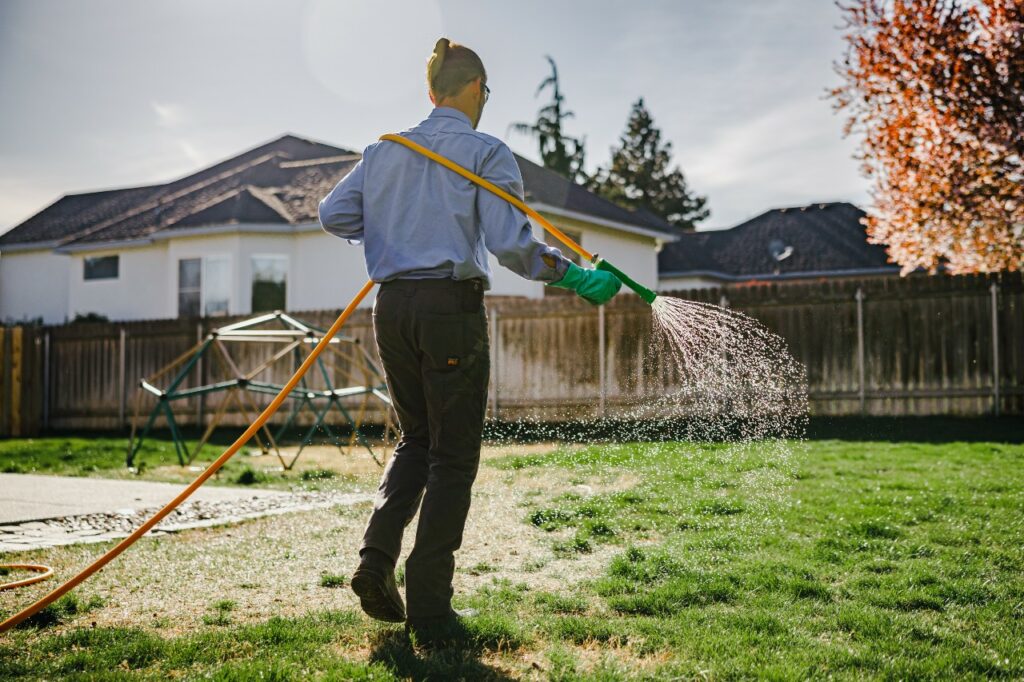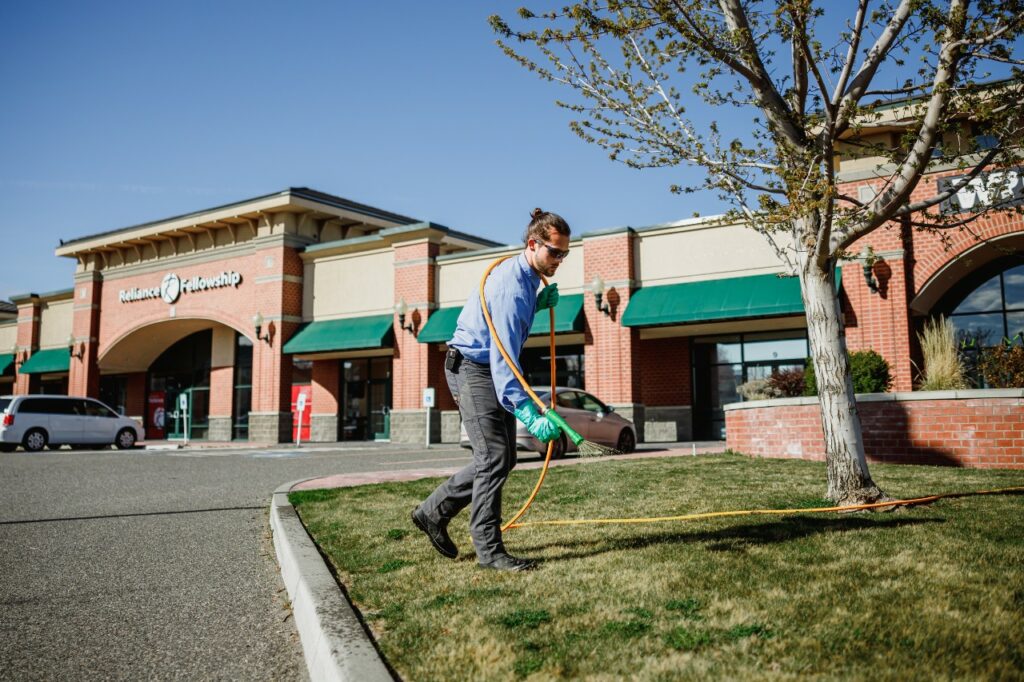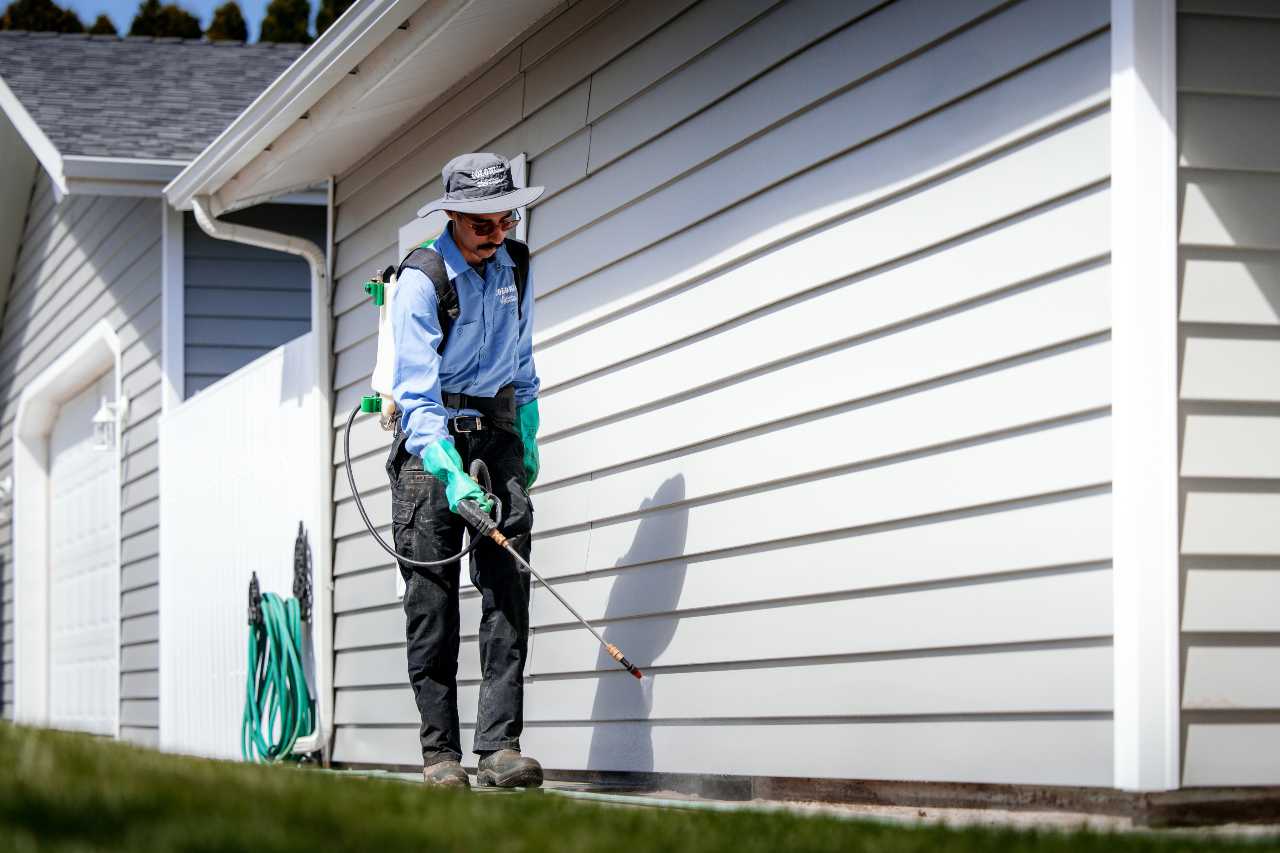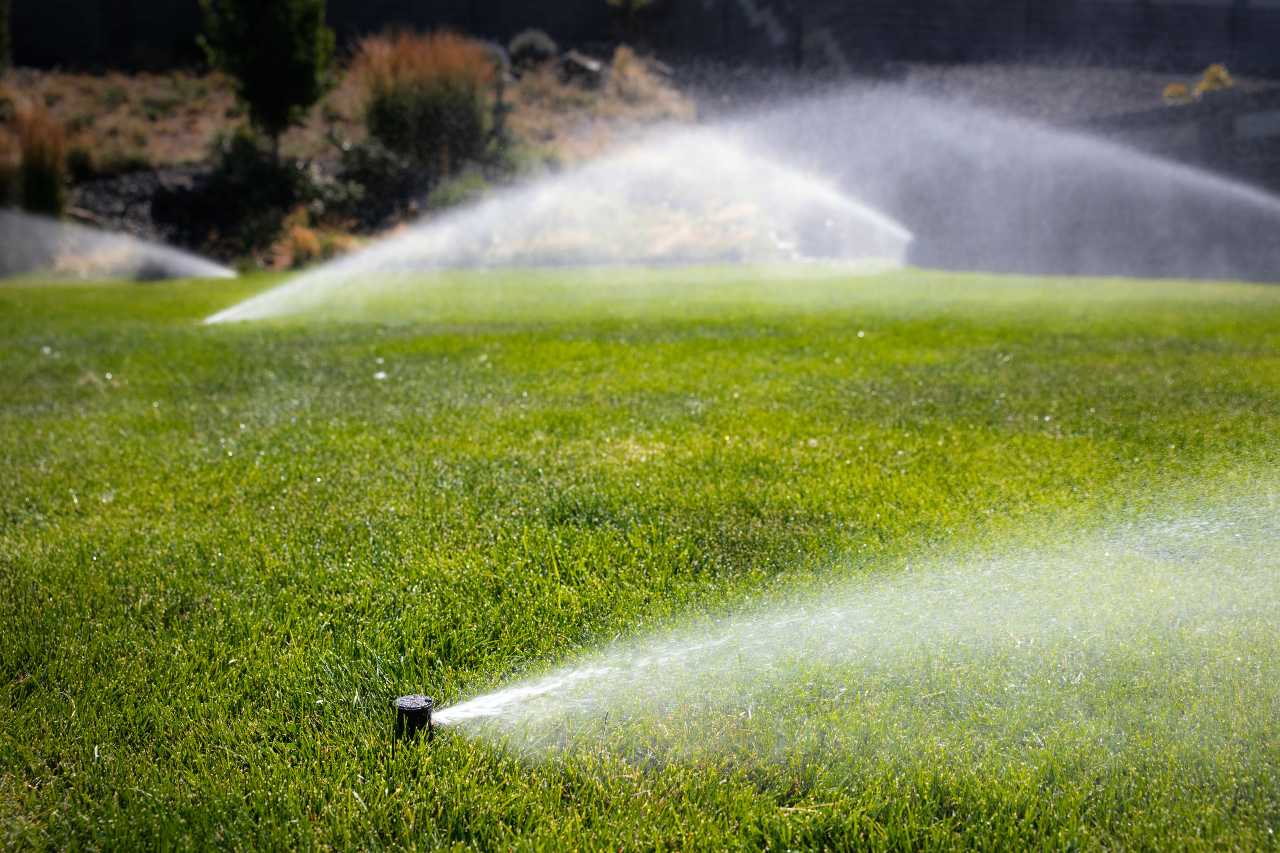
How to Remove Dead Patches of Grass in the Lawn
We all love and appreciate seeing a lush, verdant lawn in our front and back yards. It makes us feel good, it boosts our curb appeal, and it serves as an ideal playground for the kids.
Your lawn is one of the first things people will notice on your property. The appearance of your lawn reflects on how it is maintained and, and also on the owner. Making your lawn full and vibrantly green comes with plenty of challenges. And one of the problems that can arise is dead patches in your lawn.
When you spot an unappealing patch of grass that appears dead or discolored, it is sours the whole look of the yard. It can be a frustrating situation and you want a solution as soon as possible.
In our busy, over-planned lifestyles, we may not have the time to remedy the dead, brown spots of grass and get the yard looking beautiful again. Then there is knowing how to fix this unsightly blotch of grass. You don’t want to make it worse. What should you do?
What Causes Dead Patches of Grass?
There are quite a few factors that could lead to your lawn being besmirched with brown patches of dead grass. Among the reasons for dead grass are incorrect feeding and watering, poor preparation methods, pests, and fungal diseases such as brown patch and rust.
You might also be looking at heat and drought conditions causing dead grass to show up on your lawn.
What you do know is that you will have to uncover why your grass is dead and take actions to bring it back to a healthy state.
Actions to Take to Remedy Dead Areas in Your Lawn
Evaluate the Condition of Your Grass
It’s possible that a small portion of your grass is just dormant. For example, certain types of grass will become dormant and turn brown. So, you’ll want to inspect the crowns located at the plant’s base. Grass blades grow from this whitish area.
See if the crowns are healthy. If they are, they are probably dormant. Conversely, dried out or discolored crowns translate into grass that will not turn green again. Now you know that area of lawn needs to be treated and replaced.
Prepare Area of Discolored Grass
When it comes to determining how to revive your dead grass, site preparation is important. The goal is to create a healthy environment for new grass sod or seed to take root in. The first step involves eliminating weeds or old grass.
Then, we recommend purchasing a nonselective herbicide and spraying it over the affected areas of the lawn. You want kids and pets away from this impacted area for a minimum of a couple of hours.
In using an herbicide, it is important to know that it requires approximately two hours to dry and turn rainproof. It is best to do this activity under warm and sunny weather conditions, and with the absence of any winds. After a week, the herbicide will have extracted all unwanted vegetation.
Clear Away All Debris
Be sure to disperse all dead, matted turf and other debris. You will notice that certain decomposing plant materials will create a layer of build up across your soil’s surface, and that is known as thatch. You will want to make sure that the thatch is within a half inch or less in thickness.
Keep in mind that the grass will germinate and root best after coming into contact with the soil.
Aerate the Soil
What’s next is tilling the soil to roughly five to six inches deep. The objective here is making ideal use of all the vegetation. You might want to add a four to six-inch layer of compost as you till the vegetation if you are working with clay or sandy soil.
The advantage of organic matter is that it assists in sandy soil holding more water and makes sure that clay soil is not too bulky.

Fertilize the Soil
After aerating, you will want to fertilize the affected area. First, test the soil for phosphorus, as it helps to develop healthy roots. If it is determined that phosphorus is required, then spread it evenly across your lawn.
You will want to buy a grass-starter fertilizer at a hardware or garden store. This type of fertilizer is formulated to promote the development of new grass.
Seed or Plant New Sod
When it comes to planting sod, it’s important to note that large areas of brown lawn can be filled in with full sod pieces. You can use sprigs or plugs to fill in smaller sections. Make sure, as you are laying down the sod, that each piece is placed firmly up against the adjacent sod. It is necessary for the root sections to completely connect to the underneath soil.
For planting grass seed, you should evenly spread the seed across the impacted area. Be mindful of having sufficient contact between the seed and soil. Then, cover the seed with a thin layer of soil.
Roll Sod
Once you have completed the planting phase, roll the whole affected area with a lawn roller. Doing this rolling of the sod ensures the appropriate seed-to-soil contact.
After Treatment Steps
An important step to take once you have treated the area of formerly dead grass is watering, but not so much that it becomes over saturated. Just keep enough moisture in the soil to promote new growth.
In order to bring about as much lawn growth as possible, you will want to water the area a couple of times a day, at least for the first few weeks. You can gradually reduce the amount of water you apply in the subsequent weeks. Keep in mind that grass roots will grow deeper with a deep watering technique. Also, the roots will grow nearer the surface if you apply too many light applications.
Allow some time for the roots to take firm hold. Put off running heavy equipment, like a lawn mower, over the new grass area, and even be careful about walking across the area of
grass too soon. A general rule to remember is to wait to mow your new lawn until after it has grown out to one or two times the desired height.
Colonial Lawn & Garden is Your One-Stop Shop for Lawn Care & Weed Control
At Colonial Lawn & Garden, we understand that selecting the optimal fertilizer for your lawn seems technical, and that is because it is. We have the lawn care experts who know exactly what your grass needs to grow healthy and strong. Our Colonial Lawn & Garden lawn maintenance crew has the skills to apply fertilizer the right way.
Our premium lawn care program will help make your grass looks its best and keep it that way, all season long.
With the Colonial Lawn & Garden weed program, you can effectively combat weeds in your yard. We utilize safe control methods, so you are not putting the grass, your family, or any pets in danger.
Colonial Lawn and Garden has been maintaining and enhancing landscapes in Yakima and the Tri-Cities for over 35 years. We are Washington’s first choice for quality lawn and tree services in Yakima, Selah, Richland, Kennewick, Pasco, and the Lower Valley.
Call or Visit Colonial Lawn and Garden today and see how easy it can be to have a beautiful landscape.





